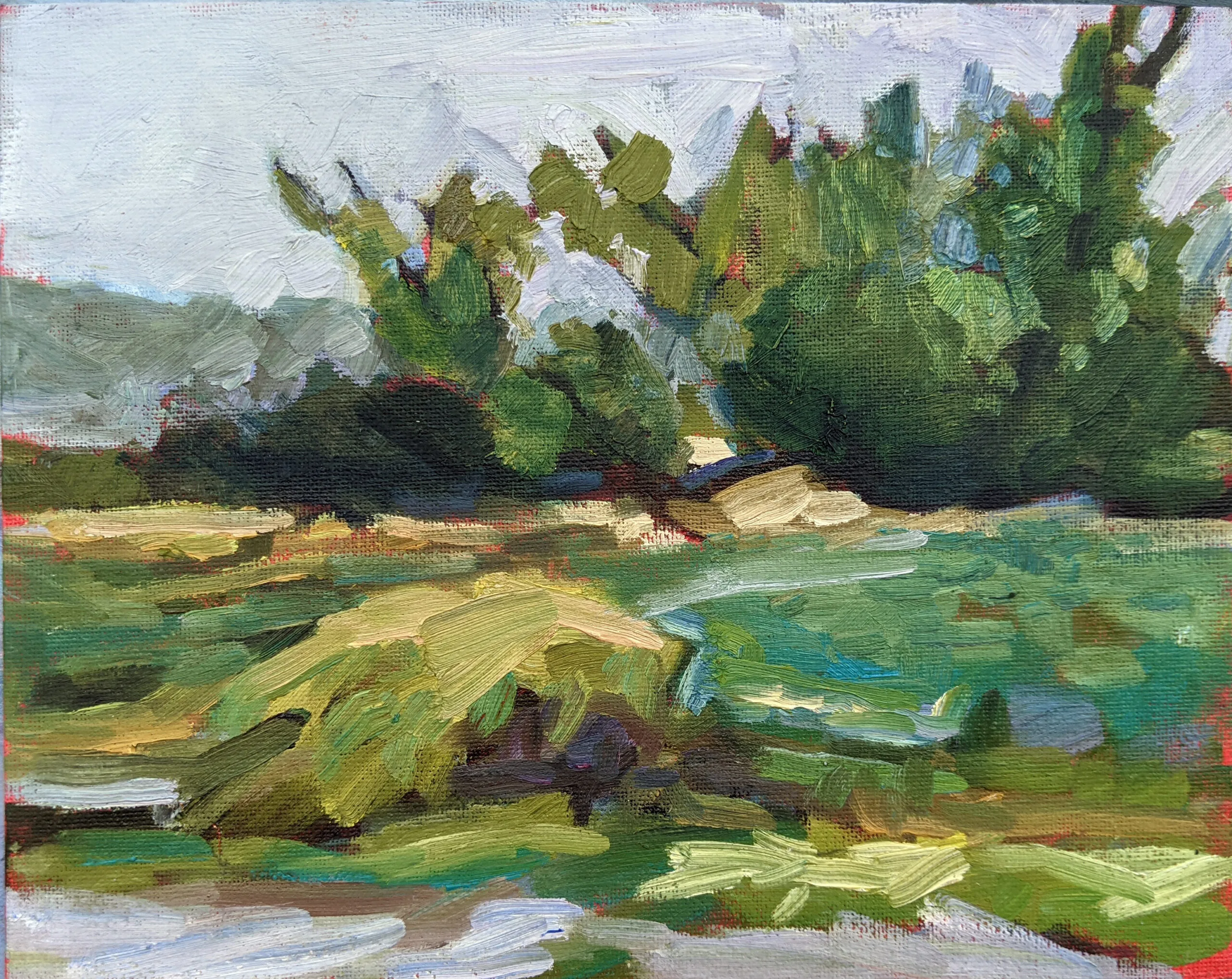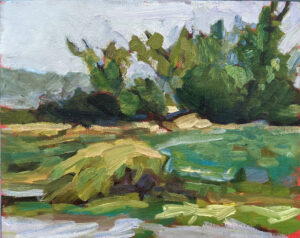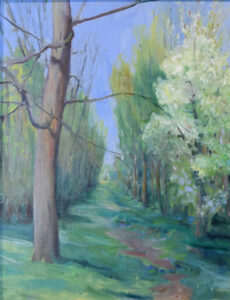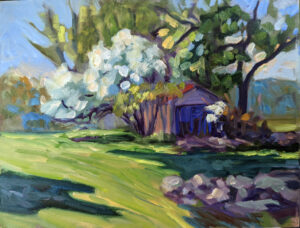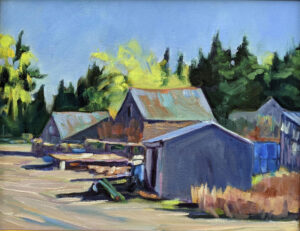Ditch the convenience greens
Sap green is a convenience mix, made of Indian (dairylide) yellow and phthalo or Prussian blue. Hookers Green is even more complex, using nickel azo yellow, indanthrone blue, and quinacridone magenta to get that deep, dull solid green tone.
Premixed colors suck the life out of your paintings, because they make dull mixtures. Instead, learn to use paired primaries. In particular, learn to mix greens. That’s the only way to avoid boredom in the ‘wall of green’ that the northeast is about to enter.
I explain this more fully in my online video class, The Perfect Palette.
Clean your brushes
Oil painting is more forgiving of dirty brushes than watercolor, but they both need clean brushes, both within the process and after.
In watercolor, that means rinsing them in cool water until it runs clean, and then wiping down the excess water and setting them lovingly aside to dry. Unless you’ve dropped them in cow muck, soap is never necessary. But you should have enough water at hand to regularly clean your brushes during the painting process. Change it as soon as it gets dirty.
In oil painting, it’s best to rag-clean your brushes during the painting process. If you must rinse in mineral spirits, carefully towel the brush dry before you start painting again, or you’ll end up with soupy paint.
When you’re done, you need to get the paint out of bristles and ferrule. If your brushes have splayed, the most common culprit is paint dried deep within the ferrules. It’s impossible to get that out, so it’s best to get them clean right after use.
I have a video on how to clean oil brushes here.
Set out fresh paint
I store my oil painting palette in the freezer between painting sessions. The paint is good for several weeks, but as soon as it develops a film or becomes stodgy, it’s history. Oil paint is carefully formulated at the proper consistency and pigment load. You cannot refresh half-dried paint by adding mineral spirits or medium to it.
“I hate waste,” you say, and so do I. But the most precious thing I have is time. I won’t waste it on a painting that’s destined to fail.
Organize your palette
Watercolorists keep your paints in the same pans because you’re wetting and reusing the same paints over and over. You’re smart to arrange them in rainbow order. You do not need 50 different paints. A paired primary palette, plus a few more for fun, will get you to any point in the color spectrum.
Oil painters can plop their paint down anywhere, but it’s a terrible idea. Lay them out in a rainbow order and then stick with that. (That’s a good reason to not scrape your palette perfectly clean between uses; the trace colors will be your guide.)
I encourage my oil-painting students to paint with tints, because it’s a fast way to lay down bright midtones. But even without this, an organized palette that you understand is a fast route to success.
Do a value drawing
If you tend to make more duds than successes, you need to slow down and do value drawings first. Don’t proceed to painting until you have a sketch you really like. The value drawing lays out the overall composition and the focal points before you ever get to paint. That fifteen minutes at the beginning is not just a tremendous time-saver, it saves you from setting off on a fundamentally-flawed path.
If you are unfamiliar with the concept, or don’t know how to do it, I recommend my online class, The Value Drawing.
My 2024 workshops:
- Painting in Paradise: Rockport, ME, July 8-12, 2024.
- Sea & Sky at Schoodic, August 4-9, 2024.
- Find your authentic voice in plein air: Berkshires, August 12-16, 2024.
- Art and Adventure at Sea: Paint Aboard Schooner American Eagle, September 15-19, 2024.
- Immersive In-Person Workshop: Rockport, ME, October 7-11, 2024.

